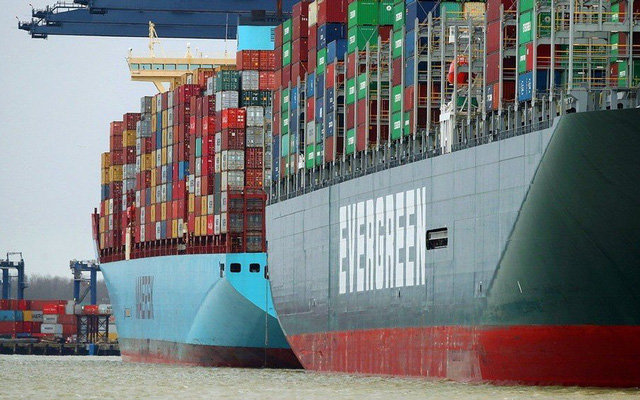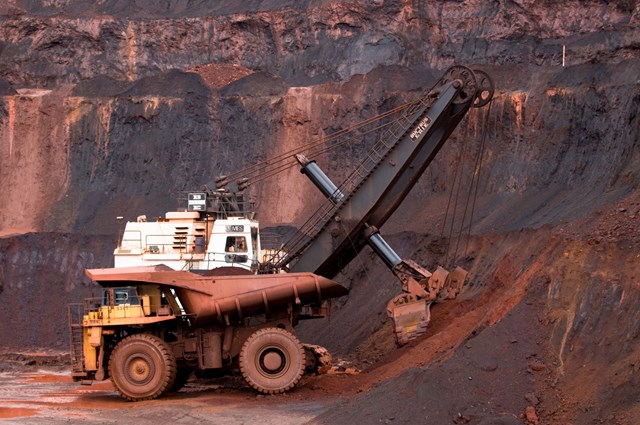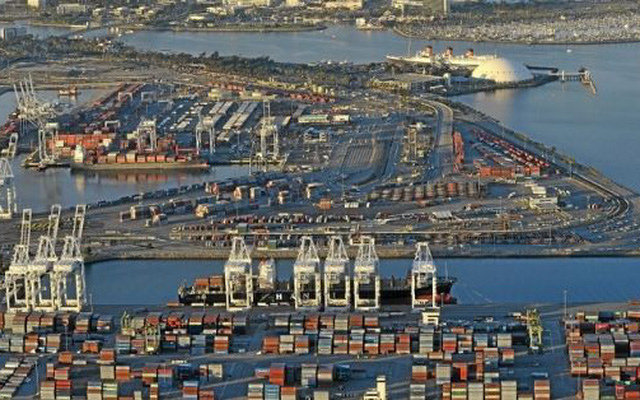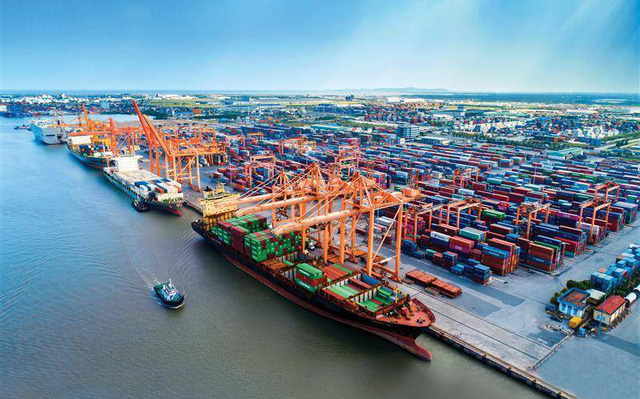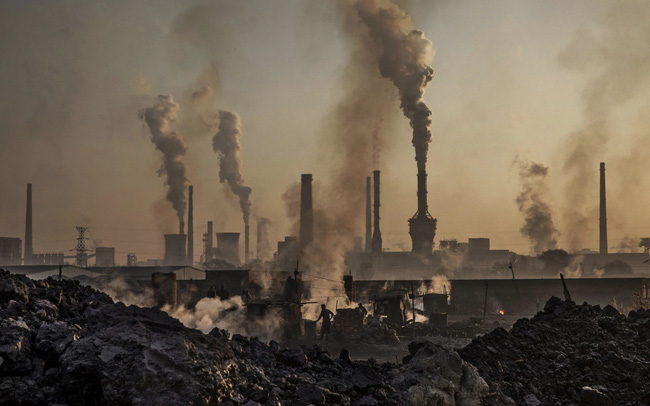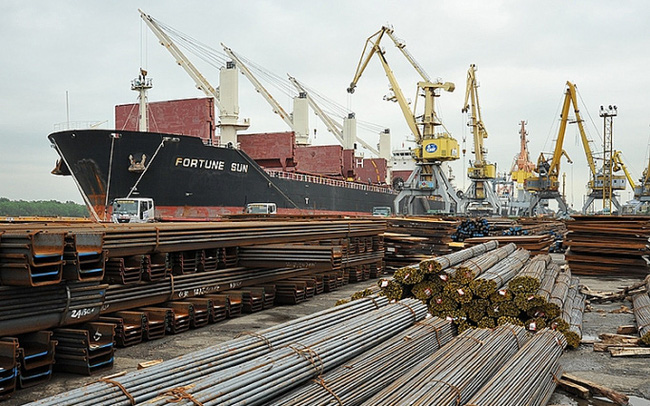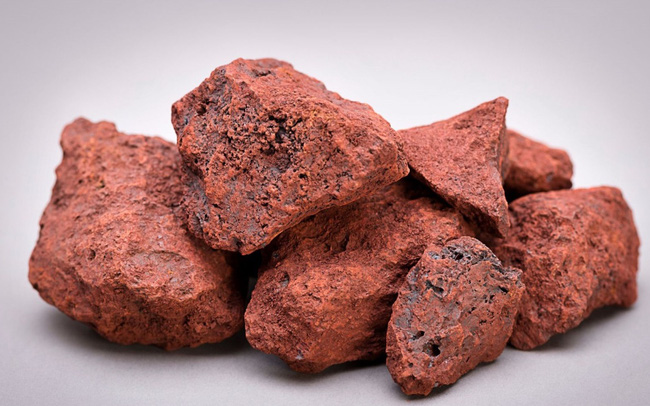
The central coastal region is expected to be prioritized to attract concentrated steel enterprises, followed by the Red River Delta.
In a report to the Prime Minister on the development strategy of the steel industry to 2030, with a vision to 2050, the Ministry of Industry and Trade calculated that the total market demand of Vietnam’s manufacturing industries in the period to 2030 could reach 310 billion USD. . In which, the market demand from mechanics serving industrial works and automobiles is the largest, both of which are 120 billion USD, followed by railway transport (35 billion USD), followed by mechanics for construction, agriculture, etc. industry and processing (15 billion USD); Finally, standard equipment and the subway are both $10 billion.
The Ministry of Industry and Trade believes that the demand from the manufacturing industry as mentioned above is a huge market for the domestic steel industry, especially high-quality fabricated and alloy steels serving the manufacturing industry, capital This is a segment where Vietnam is not yet self-sufficient in domestic steel production.
Along with the orientation of the investment location, the Ministry of Industry and Trade also considers that the use of technology in investment in steel production in the coming time must be new, advanced, modern and energy-saving technology and equipment. , high productivity, environmental friendliness and gradually overcome, replace and eliminate fragmented, small-scale production projects with outdated technology.
Faced with the above demand, the Ministry of Industry and Trade plans to attract steel production enterprises to invest and develop concentratedly in the central coastal region, where there are many deep-water ports and relatively abundant renewable energy sources. local energy consumption), the land fund is large and the compensation and site clearance costs are low. Next is the Red River Delta, where the population is densely populated, with great consumption demand and developed transport infrastructure by sea, road, and railway.
Accordingly, the State will also have preferential policies on land, infrastructure, science and technology and train human resources to encourage and promote the development of steel projects, in order to form and develop strongly. metallurgy industry, meeting the process of industrialization and modernization of the country.
As for raw materials, existing resources and minerals will be utilized to deeply process non-ferrous metals such as Chromium, Nickel, Titanium, Wonfram, Manganese, etc., in order to manufacture alloys with special physico-chemical properties. .
For each specific type of steel product, the strategy also proposes certain orientations, in which, for HRC, new large-scale projects will be invested.
Basic steels for mechanical engineering, processing and manufacturing are oriented to be produced in large steel complexes built in areas with deep-water ports, convenient for transporting input materials and finished goods. Products.
For alloy steel and especially for the mechanical industry, the Ministry of Industry and Trade believes that these are alloy materials with a production process with a separate and complicated technology compared to ordinary steel types. In addition, these high-grade steel grades are diverse in types because the requirements of each mechanical engineering sub-sector are different. However, these steel grades are not really large in quantity, with complicated production processes, so there are huge research and development costs, investment costs and high production costs if produced separately. . Therefore, these steels are often integrated in large integrated factories to ensure competitive prices.
In addition, some steels have physical and chemical requirements, especially with the addition of some non-ferrous metals to change the physical and chemical properties such as Chromium, Ni, Mn, Ti, W, Mo, Si… For example such as details in engines, powder steel for the production of spare parts in the form of 3D printing, small high-pressure injection molds can be manufactured by enterprises specialized in the field of materials that often have a process production with high-tech know-how and high cost. However, the market for these special steels is small, often with the individual characteristics of each customer.
With the characteristics of the steel industry as mentioned above, in the coming time, Vietnam needs to build large-scale metallurgical complexes, which focus on the production of processed and manufactured steels with high technology capacity. large market to initially master the production technology of basic processing steels. On that basis, it will continue to promote the production of special steel grades and high-quality alloys to serve the diverse needs of the mechanical, processing and manufacturing industries.
Regarding the development orientation of the steel industry in the coming period, at the previous meeting between the Minister of Industry and Trade and the Association, the steel industry enterprises, Director of the Department of Industry Truong Thanh Hoai proposed to build a commercial steel manufacturer. Vietnamese brand is worthy of its scale in the region as well as in the world. Accordingly, encouraging new investors to invest in iron and steel production complexes in coastal areas, with deep-water ports (ensure the supply of HRC steel for domestic consumption).
Particularly for market development, Director General Truong Thanh Hoai hopes to expand foreign markets for products with competitive advantages.
Also at the meeting, Minister of Industry and Trade Nguyen Hong Dien gave a number of orientations for the steel industry, including focusing on developing the mining and ore processing industry and forming a market for raw steel materials. strong.
In addition, the Steel Association must rise to the role of “midwife” for domestic steel production enterprises, and at the same time act as an arbitrator to contribute to stabilizing the steel market, ensuring the interests of the three parties. : State, businesses and consumers.
At the same time, each enterprise in the steel manufacturing industry must be stronger in restructuring its business, building short-term and long-term development strategies.
In addition, gradually forming an investment fund from the state budget, socialization sources, and the contributions of enterprises in the steel industry to research and invest in laboratories, producing special steel products. especially, to meet the input materials of other manufacturing industries.
Finally, Minister Nguyen Hong Dien said that it is necessary to gradually form a chain of enterprises to produce special steel products, not only stopping raw materials but also possibly finished products.
T&G Import-Export Joint Stock Company
Address: 352 Hue Street, Le Dai Hanh Ward, Hai Ba Trung District, Hanoi
Hotline: 02473010868
Email: hrm@tginterjsc.com
Website: http://tgimportexport.com



